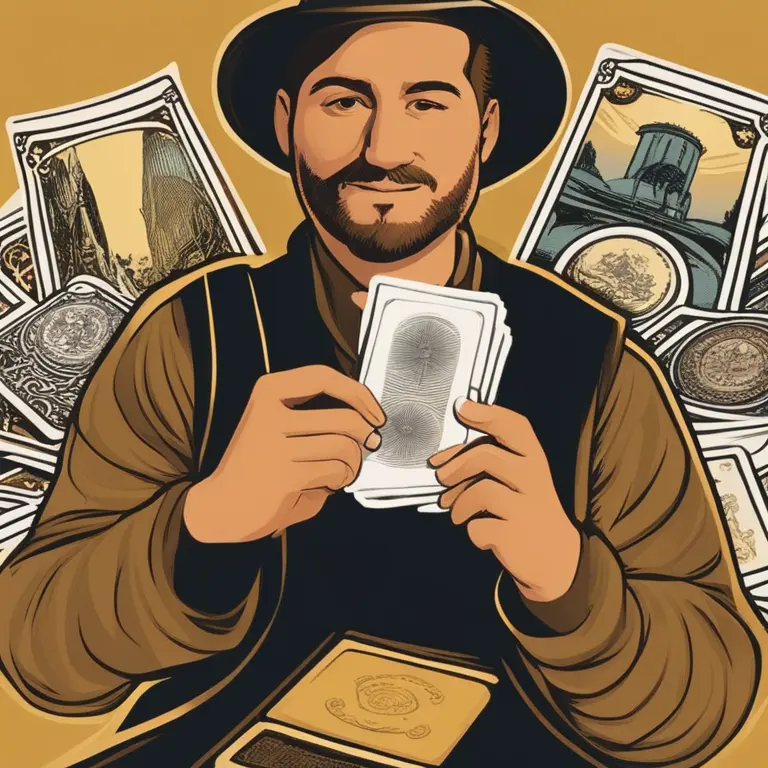
The Artistic Genesis
In the beginning, every tarot deck starts as a work of art. Artists conceptualize the imagery, imbuing each card with symbols that resonate throughout the centuries. The tarot deck typically contains 78 cards, each with its own unique image representing various spiritual and archetypal symbols. These visuals are not chosen at random; artists and esoteric scholars collaborate to ensure that each illustration is replete with meaning and intention. Colors, figures, and scenes merge to create a tapestry of metaphysical insight on every card.

Choosing the Right Materials
The selection of paper is critical. A high-quality cardstock, often linen or a linen blend, ensures durability and a pleasant tactile experience. Modern printing technology has taken the vibrancy and precision of the images to new heights, allowing for stunning depictions that capture the essence of the esoteric teachings embedded in the cards. In selecting ink, longevity and safety are paramount. Eco-friendly and non-toxic inks are now widely used, as they provide safety for users and little environmental impact.

Printing and Cutting Precision
The printing process of tarot cards is meticulous. In 2024, digital printing has become the norm, rendering each design with extraordinary detail. Following the printing phase, precise cutting machines trim the cards to uniform sizes, a process that has evolved to near perfection over the years. The edges of the cards are often treated or gilded, adding to the aesthetic and sensory allure. Quality control is an essential step, ensuring that each deck is free from defects and ready for use.

The Lamination Layer
After printing and cutting, cards are typically laminated. This preserves the vibrancy of the colors and protects the cards from wear and tear. It also grants them a certain flexibility, which is necessary for shuffling. The type of finish—matte or glossy—varies, often chosen by designers to enhance the artwork or facilitate ease of handling. Lamination also plays a key role in the ritualistic aspect of the cards, as it can add a layer of reflective sheen or deepen the impact of the colors.

Incorporating Symbolic Nuances
The symbolic content of tarot cards goes beyond the drawings themselves. It also includes the choice of typography, element placement, and even the consideration of number symbolism. Each detail is a deliberate choice to elicit a specific interpretation or feeling—a language of imagery speaking directly to the intuitive mind. A card is not simply created; it is crafted to be a key that unlocks personal introspection and foresight.
Packaging and Presentation
Once the tarot cards are made, the final presentation is paramount. Sustainable packaging materials are becoming more common, and many tarot decks now come in sleek, recyclable boxes. Inside, an informative booklet—a guide for interpretation—usually accompanies the cards, providing first-time users and seasoned practitioners alike with context for each card. The unboxing experience has been elevated to ritual status, forming an integral part of the tarot journey.
Modern Tarot: A Blend of Tradition and Innovation
As we continue beyond 2024, the creation of tarot cards remains a balance of tradition and technological advancement. Traditional symbolism is upheld, while printing and production leverage the best of modern techniques. Ethical sourcing, environmental concerns, and accessibility have all become aspects tarot card manufacturers consider to meet the needs of a discerning, contemporary clientele.
Published: 2/8/2024
Modified: 2/8/2024
More predictions
Come back here soon to learn more about yourself and your future


Zodiac Heart Compass: Find Your Emotional Direction
Delve into the secrets of the zodiac to discover how astrological signs guide the emotions and relationships of their bearers.


The Origins of Zodiac Signs: An Astrological Journey
Delve into the ancient roots of the zodiac as we trace the origins and significance of these celestial symbols in astrology.